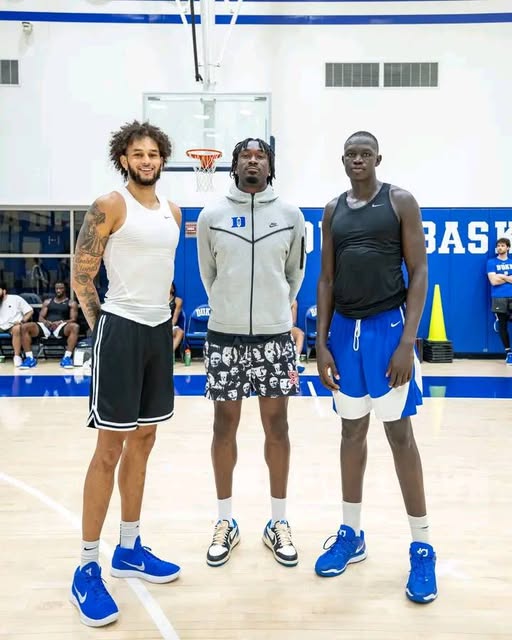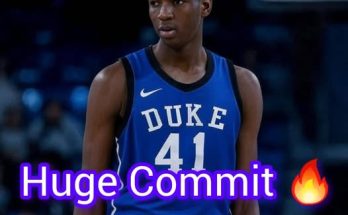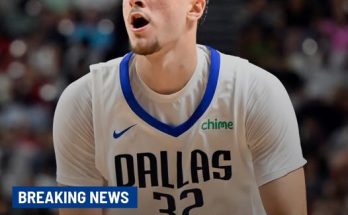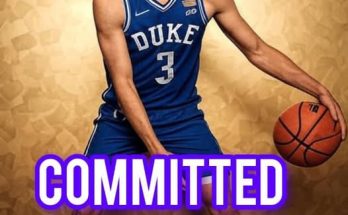Cameron Indoor Stadium has seen its fair share of legends. From Christian Laettner’s game-winners to Shane Battier’s defensive dominance, from Kyrie Irving’s dazzling but brief stint to Zion Williamson’s seismic dunks—Duke basketball has always been the heartbeat of a storied tradition. But on this particular summer afternoon in Durham, there was an unmistakable buzz, a certain magic in the air. And it wasn’t just the squeak of sneakers or the rhythmic bounce of basketballs echoing across the old gym floor.
Because on this day, a legendary Duke returned.
He wasn’t just passing through. He came with purpose, curiosity, and a discerning eye forged by years of high-level experience. He had been part of national championship teams, competed at the highest levels, and seen some of the greatest players in the history of the game. But when he walked into Duke’s practice gym that day and stood courtside as the 2025-26 Blue Devils went through their summer session, he saw something different. Something special.
And it left an impression he couldn’t shake.
The Return of a Blue Devil Great
Grant Hill. The name alone reverberates through Duke’s basketball annals like a church bell on Sunday morning. A two-time NCAA champion (1991, 1992), an All-American, an NBA All-Star, and a consummate professional on and off the court, Hill was more than just a basketball player—he was a symbol of Duke excellence.
Now an NBA executive, part-owner of the Atlanta Hawks, and an accomplished broadcaster, Hill hadn’t been back to a Duke practice in quite some time. But with Jon Scheyer now firmly entrenched as head coach, the program’s connection to its alumni has grown even stronger. Scheyer, himself a 2010 national champion and former assistant under Coach K, has made it a point to bridge generations—welcoming legends like Hill, Jay Williams, J.J. Redick, and Carlos Boozer back into the fold.
When Hill arrived at practice, players quickly noticed. Respectfully, they continued their drills, but every once in a while, their eyes darted toward the sideline where the legend stood. Calm. Observant. Silent but powerful.
Then, Hill spoke. Not to the team. Not yet. But to Jon Scheyer.
And his words carried weight.
“This Feels Different, Jon.”
Scheyer, clipboard in hand, was walking through the set pieces when Hill leaned in. “This feels different, Jon,” he said, nodding toward the court. “I’ve seen national title teams up close. I played on one. I’ve covered dozens. But there’s something about this group’s energy. The chemistry. They move like a unit.”
Scheyer smiled. He had heard similar rumblings from assistant coach Chris Carrawell and new developmental coach Amile Jefferson, both former Blue Devils themselves. But hearing it from Grant Hill was different. Hill’s voice was gospel inside the Duke community.
What impressed him most wasn’t just the athleticism—though 7’3” Olivier Rioux’s towering presence couldn’t be ignored—nor the crispness of the drills. It was the way the players communicated. Talked through switches. Supported each other after missed shots. Celebrated the little things.
It reminded him of the 1991 and 1992 teams. The trust. The brotherhood. The willingness to sacrifice for the greater good.
A New Leader Emerging
One player who stood out was sophomore guard Jeremiah Davis. A five-star recruit the year before, Davis had a quiet freshman campaign as he sat behind veterans. But now, with the stage widening and the rotation opening, Davis’s voice rang loudest in practice.
“Switch left!” he yelled during a scrimmage drill. “Eyes up, let’s get into our press!” His enthusiasm was infectious.
Hill turned to Scheyer again. “That kid reminds me of a young Jason Terry—fiery, confident, but unselfish.”
Scheyer nodded. “He’s our sparkplug. His engine doesn’t stop.”
Davis, flanked by incoming freshmen like point-forward K.J. Lockhart and sharpshooter Davion Greene, seemed to be forming the core of a team that blended youth, length, and high basketball IQ. There were no clear egos. No ball-stoppers. Just seamless movement and relentless effort.
Hill saw it—and felt it. The echoes of Duke’s golden years.
Behind the Scenes with the Coaching Staff
Later, Hill joined the coaching staff in the film room. They reviewed breakdowns from practice, and Scheyer walked him through his evolving offensive philosophy. More spacing. More five-out looks. More versatility from wings who could guard 1 through 4.
“We’re trying to recruit smart defenders and passers,” Scheyer explained. “Not just scorers.”
Hill leaned back in his seat and smiled. “That’s what wins championships.”
They discussed how NIL and the transfer portal had changed the game, but also how Duke was adapting. Instead of fighting the current, Scheyer was surfing it. The Blue Devils had brought in two veteran transfers, including a 6’9″ combo forward from Creighton who could shoot and defend. Hill said the kid reminded him of Shane Battier.
But more than the roster, what stuck with Hill was the program culture.
“Coach K built this thing on standards,” Hill said. “But watching this team, I see you’re upholding those standards while still creating your own.”
Scheyer responded: “The foundation doesn’t move. We just build the house differently.”
A Quiet Talk with the Team
Before leaving, Hill finally addressed the team. The gym grew silent.
He stood at midcourt, surrounded by the next generation of Blue Devils. “I’ve been in your shoes,” Hill began. “You’re representing something bigger than yourselves.”
He recounted stories from the early ‘90s, from running sprints under Coach K to getting torched in practice by Bobby Hurley. He laughed when he recalled Laettner’s infamous intensity. But then his voice softened.
“You may not realize it now,” Hill said, “but these moments—this gym, these practices—will be some of the greatest of your life. Don’t waste them.”
He paused and scanned the room. “You’ve got the talent. But what I saw today—the connection, the communication, the selflessness—that’s what makes championship teams.”
A few players nodded. Davis looked visibly moved. Rioux smiled shyly. The moment hung in the air.
Legacy, Reflected
After Hill departed, the team remained on the court. No one wanted to leave. Scheyer gathered them for one last huddle.
“You heard what Grant said,” he told them. “He saw something in you. Let’s keep building.”
Assistant coach Jai Lucas turned to Carrawell and whispered, “That kind of visit can change a season.”
Indeed, it felt like a spark had been lit.
Grant Hill’s visit wasn’t just a cameo. It was a passing of the torch. A silent acknowledgment that this program, now under Scheyer’s watch, was still in the hands of those who understood the weight of the jersey. The value of a huddle. The power of being a Blue Devil.
What Makes This Team Special
The 2025-26 roster isn’t headlined by one surefire No. 1 NBA Draft pick like Paolo Banchero or Zion. Instead, it’s a group of rising talents and balanced stars—playing with synergy and sacrifice.
From high-motor wing T.J. Redmond to floor-stretching big Luka Savic from Serbia, Duke’s recruiting focus clearly prioritized fit over flash. Practices looked more like pro training sessions—heavy on fundamentals, spacing, and efficiency.
And in an age of constant turnover, one word kept popping up: continuity.
For the first time in years, Duke returned over 65% of its scoring. Players like Davis, Lockhart, and veteran guard Markee Bell had been in the program long enough to feel ownership. Scheyer even instituted “Player Led Practices” on Mondays where captains directed drills.



